#Indus Script
Explore tagged Tumblr posts
Text
they have not only finally cracked the indus script, they have even created a keyboard for the indus script omg


62 notes
·
View notes
Text
Time Travel Question 11: Ancient History IV and Earlier
These Questions are the result of suggestions from the previous iteration.
This category is for suggestions made too late to fall into the correct grouping.
Please add new suggestions for this category below if you have them for future consideration.
#Time Travel#Bruniquel Cave#Neanderthals#Cueva de las Manos#The Cahokia Mounds Culture#Pre-Black Sea Cultures#Linear B#Indus Script#Nemetona#Sarcosuchus#Zhou Dynasty#Stonehenge
192 notes
·
View notes
Text

The Indus script consists of signs and symbols, primarily found on stone seals like this one.
3 notes
·
View notes
Text

Okay, this was completely unexpected.
I’m reading Deciphering the Indus Script by Asko Parpola and apparently we’re going to take a sudden detour through the Mayan civilization.
For reference, the Indus Valley is in Asia. The Mayans lived in Central America. Completely different parts of the world.
But as it turns out, the methods used to decipher the Mayan writing system might be useful for solving the still unreadable Indus script.
In the meantime, here’s the proposed “Mayan alphabet”.
1 note
·
View note
Text
Classical arabic, harrapan, russian, japanese and latin. Also, very important question @wherethereareoctobers does being fluent also include being literate in those languages writing systems?
If you could instantly be granted fluency in 5 languages—not taking away your existing language proficiency in any way, solely a gain—what 5 would you choose?
#asking because I'm pretty sure that there's like an at least a million dollar reward for whoever is able to decode the indus/harrapan#/indus valley script which was the basically written form of the harrapan language and if i knew that i could make cashhhh#but even if I didn't knowing fluent latin and harrapan would probably get me a damn good career as a historian or linguist#or maybe I'd charge lingustics to ask me questions about words and grammar rules in those languages so they could make links between those#languages and modern day ones#i wanna know classical arabic to know the Qur'an better but it could also be used the same way as harrapan&latin in history&linguistics#also i could read so much stuff i wanna read in latin and also becuase romance languages all evolved from latin#I'd be able to understand and speak a little bit of italian and french. not well but I'd kind of be able to do it so yeah#🤍#🟡#linguistics#languages
229K notes
·
View notes
Text
Anyone who can decode 5,000-year-old stone slab can get £800,000
Do you think you can work out what’s on these ancient seals? If you can prove it, you could be in line for a whopping $1million (£832m) reward. Archaegological sites and artefacts left behind by the Indus Valley Civilisation, which emerged more than 5,300 years ago in what is now northwest India and Pakistan, have long been a source of intriguige – and frustration – to researchers. The…
#$1million#Archaeological decipherment reward#decipher#decode#indus#Indus Valley Script#million#Muthuvel Karunanidhi Stalin#reward#script#Tamil Nadu#valley
0 notes
Text
Indus Valley Script: Why British and Communist Historians did not want it to be taught!
Indus Valley Script: Why British and Communist Historians did not want it to be taught!▪️ Historian Arnold J. Toynbee had said – If the history of any country has been tampered with the most in the history of the world, then it is the history of India.Indian history begins with the Indus Valley Civilization, it is also called the Harappan Civilization or the Saraswat Civilization. It is said that…

View On WordPress
#Indus Valley#Indus Valley Script#Why British and Communist Historians did not want it to be taught!
0 notes
Text
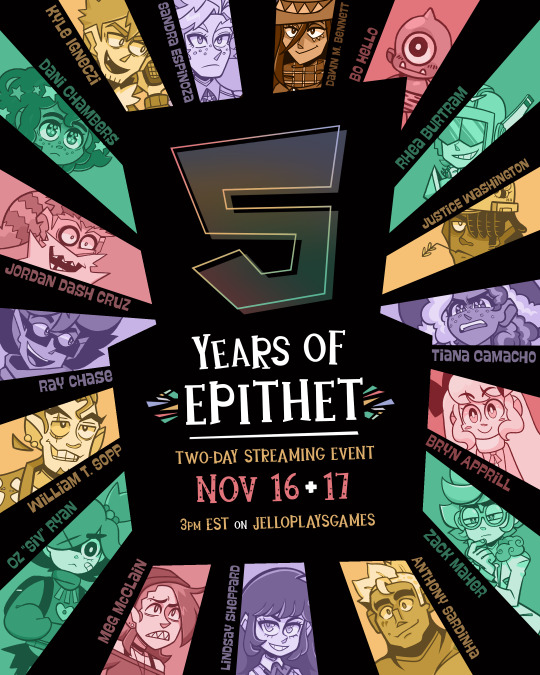
Hello! Super excited to announce that we're going to be hosting a TWO-DAY EVENT for Epithet Erased's five year anniversary.
(Yes, it's been five years. Isn't that insane?)
The even will be streamed LIVE on our usual livestream YouTube channel, JelloPlaysGames, at 3pm EST on November 16th and 17th.

The first stream (click here) is a Voice Actor Panel, similar to the Two-Loween event held on the original anniversary. We'll be reading original scripts out loud, looking at fan art, doing signings, and more, alongside several special announcements including a preview of the Giovanni Lullaby. Ooh~
The following guests will be on this stream:
Dani Chambers (Molly)
Kyle Igneczi (Giovanni)
Zack Maher (Sylvie)
Lindsay Sheppard (Mera)
Anthony Sardinha (Indus)
Sandra Espinoza (Percy)
William T. Sopp (Ramsey)
Dawn M. Bennett (Zora)
Justice Washington (Howie)
Jordan Dash Cruz (Howdy Morning the Bartender)
Tiana Camacho (Lorelai)
Oz Ryan (Trixie)
Bryn Apprill (Phoenica)
Ray Chase (Rick)
Meg McClain (Spike)
Rhea Burtram (Character Designer + Lead Artist)
Bo Hello (Book Illustrator)
If there's a hypothetical scene you've ever wanted to see between two or more characters, let us know! We'll be reading lots of little skits with every single voice actor participating at least once, and we need lots of ideas!

The second stream (click here) will start the following day, Sunday the 17th also at 3pm EST. This one focuses on the Epithet Erased TTRPG book. It's a long way from done, but we have hundreds of pages to preview!
I'll be going over the general rules, artwork, and spending a lot of time diving into the setting's lore and the intricacies of the example character sheets.

If you'd like to submit fan art for the cast and crew to look at during the stream, please send it to [email protected]
RULES FOR ART SUBMISSIONS:
PLEASE send the name you'd like to be credited as
Art does not have to be new, you can submit old stuff
You can send multiple pieces, but we only have so much time on stream, so send your favorites!
No NSFW
I won't share anything that could be seen as the creator endorsing a headcanon. That means no shipping art, no non-canonical pride flags, no Anime Campaign stuff. This is my rule when reblogging and retweeting, too. Even if I like it, I won't share it.
Please submit BEFORE the stream starts
We got 1000+ pieces last time we did an anniversary stream, so we cannot guarantee that your art will be showcased, but we'd love to see it in the email anyways!
418 notes
·
View notes
Text
Yall gotta be lying about not being able to decipher the indus valley script that's just stick figures man this shit is easy
196 notes
·
View notes
Photo
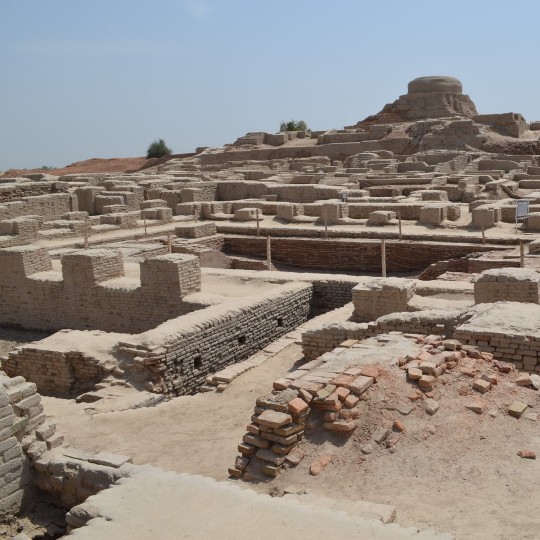
The Indus Valley Civilization was a cultural and political entity which flourished in the northern region of the Indian subcontinent between c. 7000 - c. 600 BCE. Its modern name derives from its location in the valley of the Indus River, but it is also commonly referred to as the Indus-Sarasvati Civilization and the Harrapan Civilization. These latter designations come from the Sarasvati River mentioned in Vedic sources, which flowed adjacent to the Indus River, and the ancient city of Harappa in the region, the first one found in the modern era. None of these names derive from any ancient texts because, although scholars generally believe the people of this civilization developed a writing system (known as Indus Script or Harappan Script) it has not yet been deciphered. All three designations are modern constructs, and nothing is definitively known of the origin, development, decline, and fall of the civilization. Even so, modern archaeology has established a probable chronology and periodization: Pre-Harappan – c. 7000 - c. 5500 BCE Early Harappan – c. 5500 - 2800 BCE Mature Harappan – c. 2800 - c. 1900 BCE Late Harappan – c. 1900 - c. 1500 BCE Post Harappan – c. 1500 - c. 600 BCE The Indus Valley Civilization is now often compared with the far more famous cultures of Egypt and Mesopotamia, but this is a fairly recent development. The discovery of Harappa in 1829 CE was the first indication that any such civilization existed in India, and by that time, Egyptian hieroglyphics had been deciphered, Egyptian and Mesopotamian sites excavated, and cuneiform would soon be translated by the scholar George Smith (l. 1840-1876 CE). Archaeological excavations of the Indus Valley Civilization, therefore, had a significantly late start comparatively, and it is now thought that many of the accomplishments and “firsts” attributed to Egypt and Mesopotamia may actually belong to the people of the Indus Valley Civilization. The two best-known excavated cities of this culture are Harappa and Mohenjo-daro (located in modern-day Pakistan), both of which are thought to have once had populations of between 40,000-50,000 people, which is stunning when one realizes that most ancient cities had on average 10,000 people living in them. The total population of the civilization is thought to have been upward of 5 million, and its territory stretched over 900 miles (1,500 km) along the banks of the Indus River and then in all directions outward. Indus Valley Civilization sites have been found near the border of Nepal, in Afghanistan, on the coasts of India, and around Delhi, to name only a few locations. Between c. 1900 - c. 1500 BCE, the civilization began to decline for unknown reasons. In the early 20th century CE, this was thought to have been caused by an invasion of light-skinned peoples from the north known as Aryans who conquered a dark-skinned people defined by Western scholars as Dravidians. This claim, known as the Aryan Invasion Theory, has been discredited. The Aryans – whose ethnicity is associated with the Iranian Persians – are now believed to have migrated to the region peacefully and blended their culture with that of the indigenous people while the term Dravidian is understood now to refer to anyone, of any ethnicity, who speaks one of the Dravidian languages. Why the Indus Valley Civilization declined and fell is unknown, but scholars believe it may have had to do with climate change, the drying up of the Sarasvati River, an alteration in the path of the monsoon which watered crops, overpopulation of the cities, a decline in trade with Egypt and Mesopotamia, or a combination of any of the above. In the present day, excavations continue at many of the sites found thus far and some future find may provide more information on the history and decline of the culture.
150 notes
·
View notes
Text
this is why any attempt made to decipher the indus script is discouraged by the western academics because being able to read the words completely topples the aryan invasion theory

18 notes
·
View notes
Text
7 undeciphered writing systems
(While reading, remember that it’s possible to decipher a script and still not understand the language that the script represents.)
(Each heading links to that script's respective Wikipedia page.)
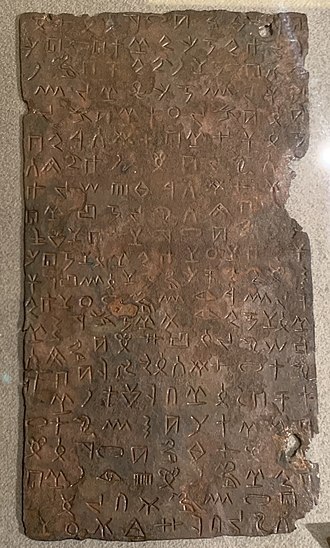
Byblos Syllabary
The Byblos syllabary is attested in 10 inscriptions found in Byblos, a coastal city in Lebanon. It likely represents a Semitic language, but despite a handful of attempts at decipherment, there still isn’t a consensus as to what sound each character represents.

Cypro-Minoan Syllabary
The Cypro-Minoan syllabary appears on ~250 objects—especially clay balls and cylinders that were used for recording economic transactions—on the island of Cyprus.
The script suddenly disappears in 950 BCE and was replaced by the Cypriot syllabary, which was used to write Greek, and based on Cypro-Minoan. This evolution allows us to infer the sounds of some of the signs in Cypro-Minoan, but we still don’t know what language it represented—probably either Minoan or Eteocypriot.
There are only ~2,500 total instances of signs for Cypro-Minoan, which is significantly less than Linear B when it was deciphered (~30,000).
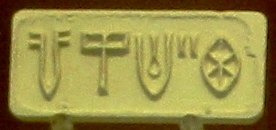
Indus Valley Script
The Indus Valley script is known from ~4,000 objects with very short inscriptions found in and around the Indus Valley, and represents the Harappan language (the unknown language of the Indus Valley civilization).
It has about 400 distinct signs, which is too many for each sign to represent a single sound or syllable, but too few for each sign to represent a word. Scholars thus think the system is logo-syllabic (basically a mix of the two).
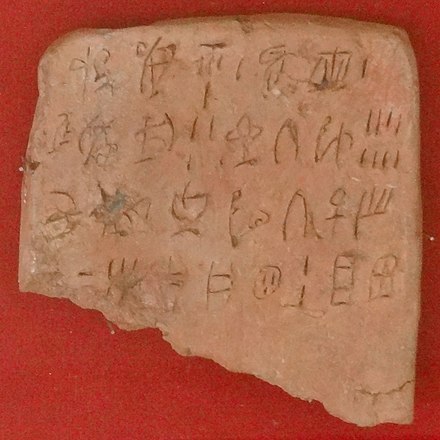
Linear A
Linear A: Everybody’s favorite mysterious undeciphered script. Linear A was used by the Minoans on the island of Crete, and is called “linear” because the script is written by cutting lines into clay, rather than pressing wedges into clay like cuneiform.
Linear A was adapted to write Mycenean Greek and became Linear B (deciphered in the 1950s), and because of this we can infer many of the sound values of symbols in Linear A. However, 80% of Linear A’s signs are unique, not shared with Linear B.
Linear A itself probably developed from the earlier Cretan hieroglyphs, which are also undeciphered.
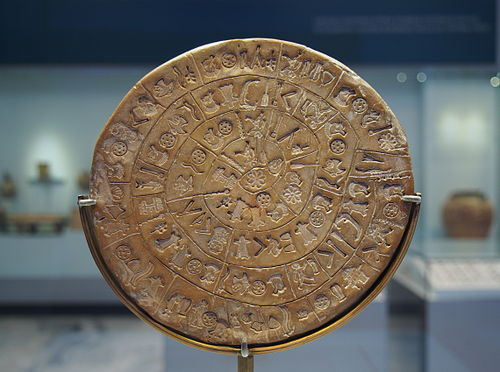

Phaistos Disk
The Phaistos Disk. Also from the Minoan civilization on Crete, yet seemingly unrelated to Linear A. This disk is the only certain attestation of this (assumed) script, spiraling around both sides. There are 242 tokens comprising 45 distinct signs.
The Phaistos Disk also happens to be an early example of moving type printing, since each character was made by pressing seals into clay.
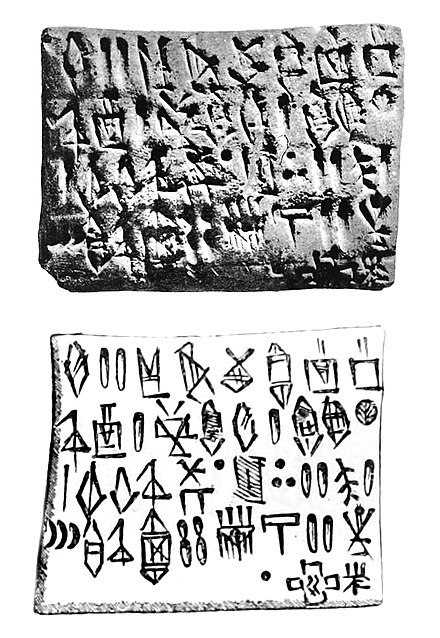
Proto-Elamite
The Proto-Elamite script developed alongside Proto-Cuneiform, and was used for similar functions and in similar ways until it was replaced by cuneiform. Proto-Elamite, like cuneiform, began as a system of marking tokens and spheres with details of economic transactions.
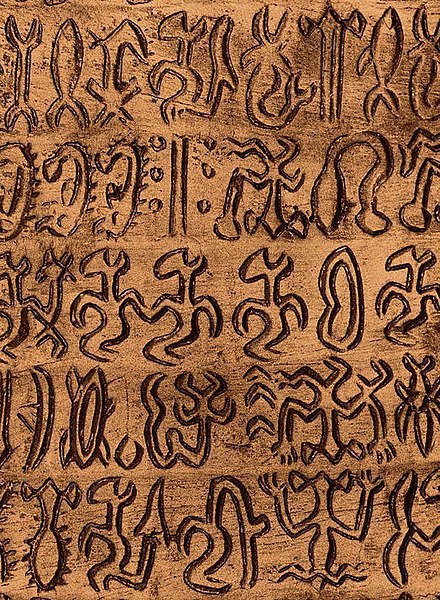
Rongorongo
Rongorongo is a system of glyphs used on Rapa Nui (Easter Island), found only on about two dozen wooden objects. According to oral history, the tablets were considered sacred, and only a small elite class could read them. Unfortunately, that tradition was wiped out after slaving raids and epidemics caused the collapse of Rapa Nui society.
Though the glyphs, if they are writing, undoubtedly represent the Rapa Nui language, little is known about it because modern Rapa Nui has had heavy influence from Tahitian.
---
Want to learn more about the world’s writing systems and their history? Check out my curated list of books on Writing & Writing Systems!
460 notes
·
View notes
Text
Do You Know This (non-canon) Autistic Character?

Propaganda
While not canon, Molly is very autistic coded! She is shown quite a few times to have sensory issues, being easily upset or overwhelmed by loud noises (and has an epithet move that lets her muffle sound- she uses it during sensory overload in episode 1), gripping her backpack straps when anxious, and being said to dislike sweets. She is very socially awkward, and while being observant she struggles to read people (an example is not picking up on Mera and Indus' suspicious behavior at the museum until they outright tell her about it).
She is extremely passionate about bears which could be her special interest since she can infodump about them on the spot (and gets very excited when she can!) its also implied she struggles to communicate/understand her feelings and uses anxiety scripts.
#Molly Blyndeff#Epithet Erased#autistic representation#autistic characters#poll#polls#tumblr poll#autism#anime#character poll#character polls#tumblr polls#autistic#autistic spectrum#autism spectrum disorder#autism in media#asd#random polls
26 notes
·
View notes
Text

Here's my Indus Valley Civilization Miku, which I drew and posted a while ago but I deleted the post bc I was self conscious... Well it's back!
Details under the cut
The Indus Valley Civilization was a Bronze Age civilization in what is now Pakistan, northwestern India and parts of Afghanistan. They were pioneers of hydraulic engineering it seems. It lasted from around 3300 BC to sometime in the 2nd millenium BC.
The people of the IVC didn't leave behind as much figurative art as their Sumerian and ancient Egyptian contemporaries, at least that I could find. Nevertheless I tried to make a design based on what I saw on the internet.



The clothes and hairstyle are based on figures like these, they're often labeled as Mother Goddess statues but I guess we don't really know what they're meant to be.
The pattern and colors of the skirt are based on the famous "Priest King" statue (the name might be a bit of misnomer since from what I read, the IVC is though to have been fairly egalitarian). There was an attempt to reconstruct what the original colors might have been, which you can see in the thumbnail of this video... which I only found after finishing the drawing orz
youtube
The jewelry is based on the ones in images like these. You can see the design I used for the earrings too, I don't think the one pictured is an earring... but I thought it would look cool...

Etched carnelian beads like these were really hot back then apparently... people in IVC cities traded a lot with Sumerians because the Sumerians were crazy for these. In fact if you look closely at my Sumerian Miku you can see one such bead... well, it's a bit compressed.


Anyways... the Indus script has never been deciphered, so the text in the image is gibberish... but I added this cool bull from a stamp! I think it adds to the picture.
anyway that's it enjoy
#indus valley civilization#harappan civilization#hatsune miku#vocaloid#vocaloid fanart#miku worldwide#my art#stuff i made
42 notes
·
View notes
Text
Made Marion Development Update, August 2024

Official Will Route Release Window
I've checked in with the team and we aren't quite ready to release Will's route in (what remains of) the summer, but we're far enough that I have team buy-in on an official release window of the first half of October.
I'll have a more specific date once we begin our beta test in September, which usually lasts two weeks. I may release the first three chapters early for testers while I finish coding the chapters 4.
Will Chapter 3 will be fully written within a week from now. It turned out to be quite a beast. That means that Will's chapter 4s may be a bit shorter each than Robin's were, however, they will also be more different from each other than Robin's were. In fact, the love scenes and the climactic Chapter 4 action scenes are in completely different locations.

I'm going half-tilt on coding while I finish the script, and should have Chapter 1 fully coded soon, as well.
World Name Thoughts
Although the world in which Made Marion is set has three named countries: Avalon, Sunjata, and Nibiru, the world as a whole does not yet have a name.
I probably won't give it an in-universe name because its inhabitants primarily identify with their country of birth and don't really have a view of themselves as being on a planet in a system full of other planets. But still, since I'm planning to create multiple tales in this world (one for each country), I could use a name to call it for marketing purposes.
I've been putting this off for a while, but I'd like something with a historical/folkloric connection that deals with the number three OR that has something to say about the kingdom's themes - Sunjata, the Sun Lands; Avalon, the Middle Kingdom (light and shadow); and Nibiru, the Twilight Realm.
Right now I'm thinking perhaps "Triskelion," named after the Celtic triple spiral pattern. But I'm not 100% satisfied with that since I have two other countries that do not have Celtic inspiration (Sunjata is inspired by Medieval North and West Africa, while Nibiru is very loosely inspired by Ancient Babylon and the Indus Valley Civilization). It's probably not a big deal since it'd be difficult to encompass all three and this entire world began with my desire to thread Celtic elements into the Robin Hood tales, but still. Any thoughts or ideas?
Here's a reward for everyone who made it to the end. Arrapso didn't make those shirtless combat sprites for nothing!
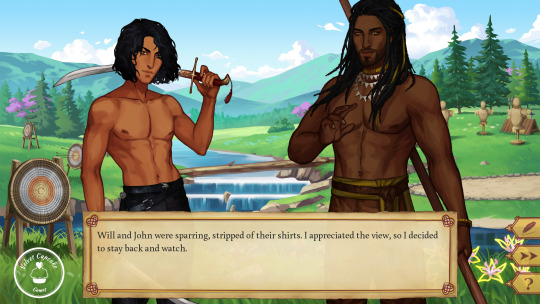
42 notes
·
View notes
Note
Hello dear Gia
May I please receive more facts about the Indus Valley Civilization <3
(and good luck with your studying)
HI YES ALWAYS (thank you!!!)
okay so here are some things we know about the indus valley civilization’s script:
it’s not alphabetical, because there are a bit too many symbols for that (375-400) (so far)
it was written from right to left. we’ve extrapolated this from the fact that the spacing on the right is usually more even than the left
it was EVERYWHERE: on the lids of jars, on seals, on beads, we’ve even found a sign board?? this could imply that literacy was widespread (reminder that this is about. ~5000 years ago. yeah)
now here’s what we don’t know about the script:
what any of it actually fucking says
there is a HUGE dearth of information on so many facts of ordinary harappan life (things like did they have religion? rulers? gender?) and a part of this is definitely attributable to the fact that we can’t for the life of us decipher their script. it’s infuriating. you’d think maybe the mesopotamians could help with that, but no. they just don’t give a shit. and honestly even if we could decipher it there’s no telling if it’ll actually give us any information because these people were advanced enough to have some old biodegradable paper-esque thing where they actually wrote stuff (as opposed to, like, clay. like in mesopotamia) which was great for them but NOT for us because it, well, biodegraded. basically our best hope rn is that some inscription with the harappan script AND another script will turn up
#mundane <3#thank you for the ask!!#indus valley#harappan civilization#harappa#indus valley civilization#history#language
12 notes
·
View notes